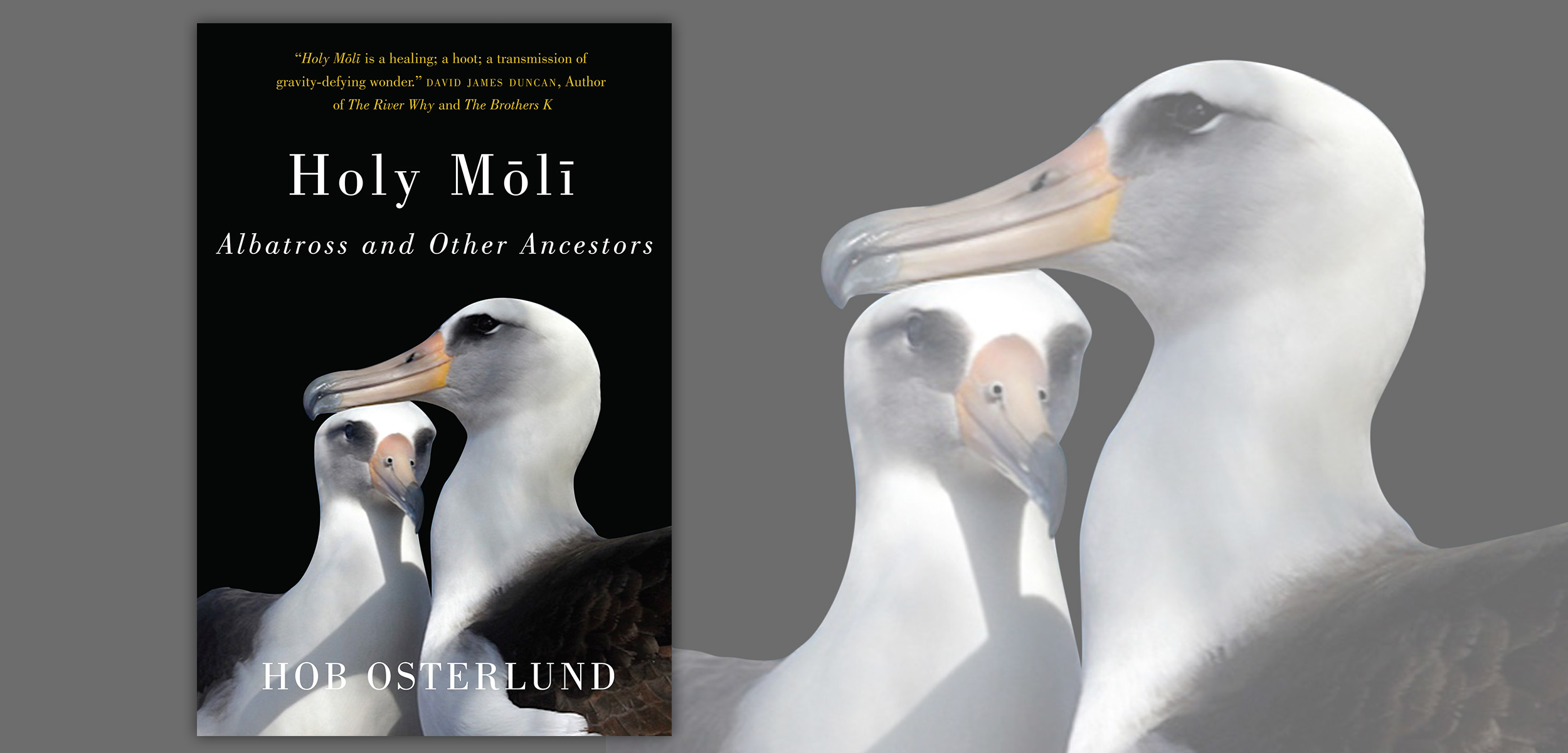Book Review: Holy Mōlī
Author Hob Osterlund introduces readers to the fabled seabirds—and her guardian spirits—through an offshoot population on Kaua‘i.
Article body copy
Far off the coast of British Columbia’s Haida Gwaii, in the face of a mounting storm, American writer and marine biologist Carl Safina and I clung like sea stars to the deck of a 21-meter ketch. We were scanning the sea for albatrosses, birds with such a seafaring lifestyle they return to land only to breed. At the time, Safina was researching his book Eye of the Albatross. I was writing a story on albatrosses for Vancouver’s the Georgia Straight.
I spied my first albatross—powerful, beautiful, and enormous—riding the storm, skimming the surface of the angry sea. With a body about the size of a goose, and narrow wings over two meters long, these are impressive seabirds. My fascination was clinched.
So I was excited to discover that fellow albatross aficionado Hob Osterlund has written Holy Mōlī: Albatross and Other Ancestors. It is a book of continuous surprises, both for its insights into the lives of albatrosses and also for its fresh writing filled with ferocious emotion.
Holy Mōlī focuses on the lineage of an offshoot population on the Hawai‘ian island of Kaua‘i that was started by a single female named Makani. The bird had overshot Midway Atoll, where the vast majority of Laysan albatrosses are born and return to breed and raise their single young. And this was no small deviation—Makani was 2,000 kilometers from her birthplace. As Osterlund points out, “Although Makani’s arrival on Kaua‘i was significant, it was not her meanest feat. What mattered was she kept on returning. … She came back year after year alone.” After five years, in 1979, she finally returned to Kaua‘i with a mate and raised a chick named Luka. This was the beginning of a new colony, where Osterlund founded the Kaua‘i Albatross Network, working with private property owners who host Laysan albatrosses, which are called mōlī in Hawaiian.
The book also follows Osterlund’s personal foray into unchartered waters. Formerly a nurse, Osterlund’s world took a dramatic shift after being visited in a dream by her grandmother’s cousin, a cultural anthropologist who wrote a book called Hawaiian Mythology.
The book exposed Osterlund to the concept of ‘aumākua: guardian ancestors in animal form. Soon after, Osterlund went through a divorce and moved to Kaua‘i, where she first encountered albatrosses. She found her ‘aumākua in Laysan albatrosses. Her world was forever changed.
In Holy Mōlī, Osterlund introduces the reader to the world of albatrosses, birds of wind and water. Albatrosses can live over 60 years, yet they spend a mere five percent of their lives on land. The rest of their time they forage at sea over an area the size of the United States, in search of food for themselves and to share with their chick. Fidelity defines them: to the site where they were born, and to their lifelong mate they rejoin each year after months of solitary wanderings. Once an egg is laid, the parents take turns on the nest as a tag team. Then, after the chick hatches, the parents engage in an exhausting multi-month enterprise, skimming the sea for enough squid, fish eggs, and other morsels to share as regurgitated slurry with a ravenous, fast-growing chick. As Osterlund describes it, “That bird carries a reflection of the open sea on its belly, a slice of sky on its back, and a chest full of love for its baby.”
Laysan albatrosses nest on remote islands, such as Midway, that have no natural predators. They are innocents, defenseless against humans, which has brought them repeatedly to the brink of extinction. It also makes them preciously uninhibited when it comes to interactions with humans. Osterlund describes an albatross stepping on her foot as it walked to a cliff to become airborne. “I was as irrelevant as a root,” she says. “I have never received higher praise.”
Her stories of individual birds were my favorite part of the book. Through Osterlund’s acute descriptions, each albatross takes on a character of its own. “She knew nothing of her destiny, she knew only hunger,” Osterlund writes of Makani preparing for her first flight. “Hunger for food, for weightlessness, for merging with the sky. The smells of the sea were overwhelmingly seductive to her. She picked up twigs and leaves from the ground, as if collecting small bits of courage.”
Osterlund’s reverence for these birds is leavened by her sometimes-peculiar sense of humor. Part of the book is devoted to the author’s soul-searching as she works out some of her life’s most painful chapters, ultimately finding solace hanging out amid Kaua‘i’s mōlī colony. To me, her personal narrative is less compelling. It is her love of albatrosses, her perceptive observations, and the poetry of the birds captured in her words that makes Holy Mōlī a truly worthwhile read.
“We cannot afford to walk sightless among miracles,” says Osterlund. Holy Mōlī is a gift of sight into these miraculous seabirds.
Holy Mōlī: Albatross and Other Ancestors
By Hob Osterlund
208 pp. Oregon State University Press

